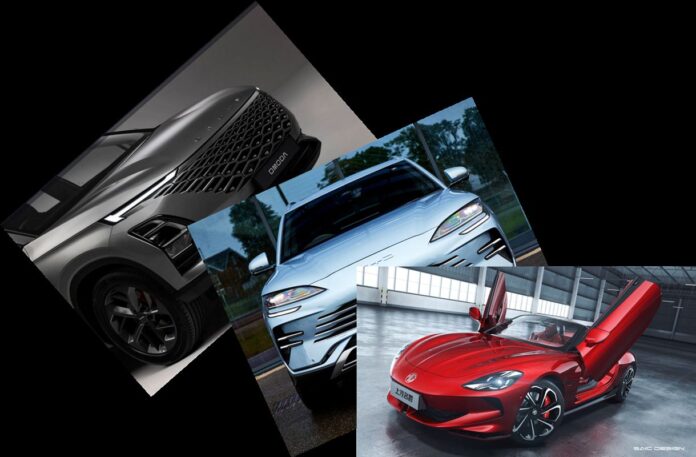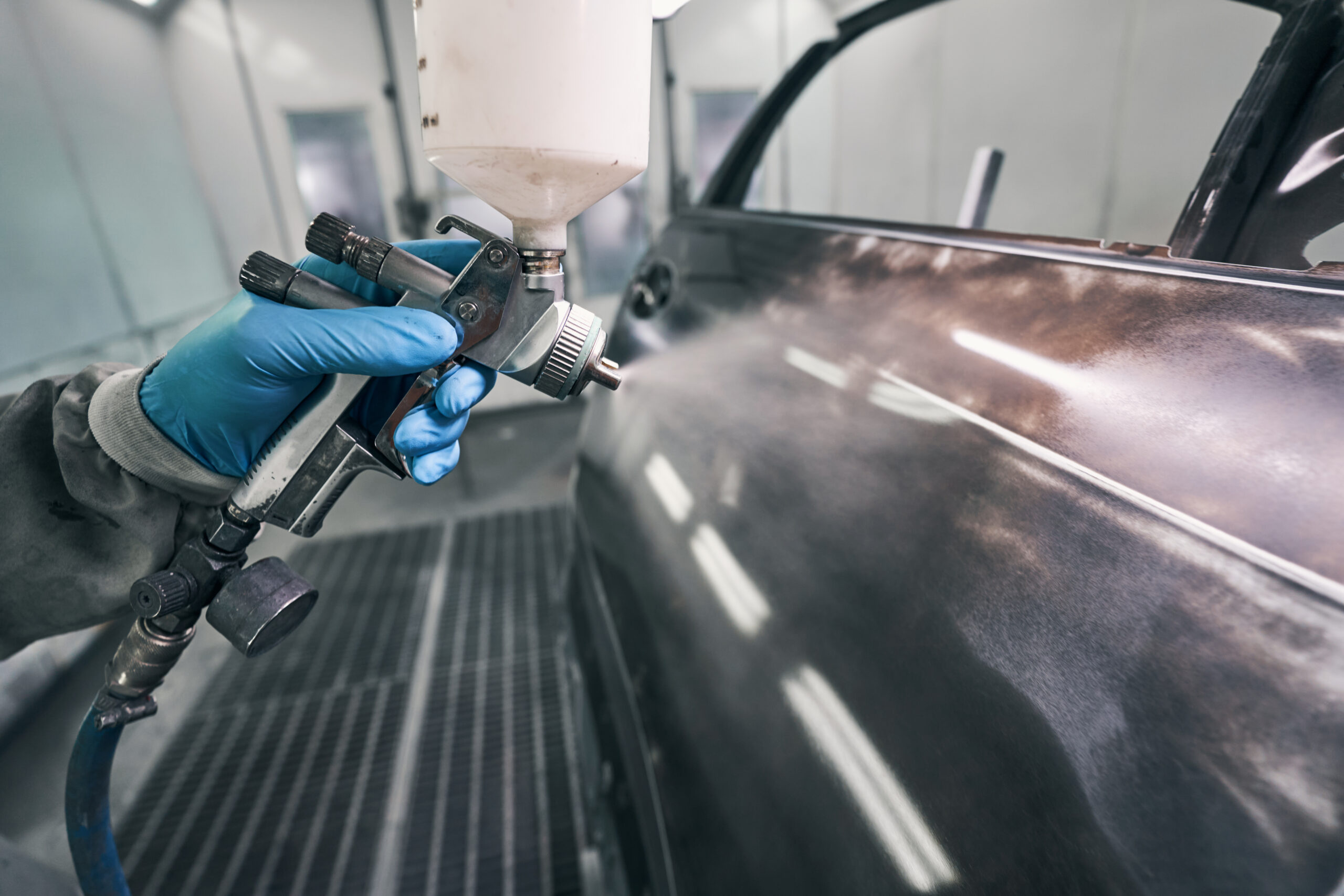As of March 2025, the European automotive landscape is undergoing a tectonic shift—one that every body shop, accident repair centre, and collision industry professional needs to understand. With battery-electric vehicles (BEVs) growing in share, Chinese brands shaking up the rankings, and regulatory tailwinds forcing automakers into electrification, the implications for the repair sector are profound.
Here’s a breakdown of the trends and data that matter most to the body repair industry.
📈 Sales Snapshot: Europe’s Market Edges Up
EU car sales grew by 2.8% in March to just over 1.33 million units compared to March 2024.
EU car sales for the quarter, January to March 2025, are effectively flat at -0.3%, totaling 3.3 million cars across the EU, UK, and EFTA.
BEVs rose by 24% in March to 222,340 cars compared to a year earlier, hitting 17% of total sales volume for the month — but still below the 20-25% needed to meet EU CO₂ tail pipe emission regulations for 2025-2027. The recent tariff spat has made imports of BEVs from China more expensive, leading those companies to switch to PHEVs and HEVs instead.
As a result, plug-in hybrids (PHEVs) posted a 20% monthly increase, bouncing back due to regulatory leniency and new long-range models.
🚗 Bestselling Models: What’s going to be soon in the bodyshop?
The top of the leaderboard is still dominated by small hatchbacks and compact SUVs—vehicles that frequent the shop floor for minor collision damage, parking scrapes, and ADAS-related recalibrations:
🔝 Top 5 Models in March 2025
Rank Sales: March 2025 Change: March 2025 vs March 2024
1 Peugeot 208 24,235 +6.5%
2 Dacia Sandero 23,291 -6.0%
3 Nissan Qashqai 22,015 -5.2%
4 Renault Clio 21,803 -0.1%
5 Volkswagen T-Roc 20,141 +0.8%
➡️ Implication for Bodyshops: Peugeot 208 in MHEV form is growing popularity, and for the moment e 208 is declining slightly. Volkswagen Tiguan jumped 24% due to a new PHEV version for the quarter (7th in March 2025), whereas the out-going first generation Volkswagen T-Roc got a top 5 placement in March. All of these models have ADAS beyond the legal requirement, placing extra recalibration work even after minor repairs.
🔋 Electric Vehicle Momentum: Not Just Tesla Anymore
While Tesla Model Y sales plunged 40% and European OEMs took the opportunity to surge. Imports from China were hit be new EU27 tariffs, leading the companies to switch to PHEV or HEVs instead, which do not attract the additional tariff.
⚡ Top 5 BEV Models in Qtr1 2025 (January to March)
Rank Sales: Qtr1 2025 Change: Qtr1 2025 vs Qtr1 2024
1 Tesla Model Y 28,876 (↓47.5%)
2 Tesla Model 3 22,354 (↓12.5%)
3 Volkswagen ID.4 20,369 (↑1.18 times increase)
4 Kia EV3 18,053 (new entrant)
5 Renault 5 E-Tech 16,326 (new entrant)
➡️ Bodyshop Readiness Alert: With increasing variety of BEV models come an array of high-voltage battery configurations, along with ever evolving body structure features, and brand-specific repair protocols. Ensure your EV safety certifications are current and manufacturer repair methods are on hand.
🧨 Explosive Growth: China’s Rise and the Regulatory Twist
In spite of newly introduced additional import tariffs for BEVs, Chinese OEMs are no longer niche players. In Q1 2025:
Rank Sales: Qtr1 2025 Change: Qtr1 2025 vs Qtr1 2024
MG Motor: 76,583 units (↑33%)
BYD: 27,365 units (↑4 times increase)
Chery (Omoda/Jaecoo): 15,663 units (↑36.93 times increase)
While these brands have moved quickly to offer plug-in hybrids and petrol models to avoid steep EU27 BEV import tariffs, the companies can quickly switch back to BEVs should an agreement be reached to reduce or eliminate the extra tax.
➡️ For the Workshop: Many of these cars (e.g., MG ZS, BYD Seal U, Jaecoo 7) may have limited OEM infrastructure in Europe, so insurers and body shops alike must rapidly adapt to unfamiliar brands, parts sourcing issues, and potential total-loss thresholds.
🛠️ The Regulatory Undercurrent: CO₂ Compliance and Emissions Pools
EU targets demand 20–25% BEV share in 2025–2027.
Most vehicle manufacturers are trying to get their own BEV supplies in place, but for those who don’t have this now, they have bought carbon credits from manufacturers such as Tesla.
The EU27 “bank and borrow” scheme offers flexibility, but penalties loom. The UK is offering a similar scheme, but the year-on-year BEV sales targets are even more ambitious than the EU27.
The result is going to be a much faster turn over of new model types, selling in even smaller volumes, and right now, in spite of financial penalties from government.
➡️ Collision Market Impact: The sales targets push OEMs to sell more BEVs—even at a loss—but there has been significant market resistance. Offering ‘free’ tax incentives speeds up the adoption, but every time this is withdrawn sales reduce. Even so the number of vehicles and the number of running changes means shops will increasingly work on newer models. Expect parts delays and software repair challenges.
🧭 Strategic Trends for the Body Repair Industry
1. Electrification = New challenges
Increased BEV/PHEV penetration means meeting requirements of appropriately qualified team members, access to the correct information for the model about to be repaired, and an understanding / mitigation of risks associated with large Lithium-Ion battery packs. There is significant work to be done in assessing battery condition after impact, and following on from that, traction battery repair.
2. Parts & Panels: The Chinese Complexity
Chery, MG, and BYD offer low-cost alternatives, but parts availability is sporadic. Shops may need to brace for delays—or higher write-off risk due to part cost/value ratios.
3. Insurers Watch EV Fire Risk & Repair Costs
HEV / PHEV / BEV repairability, battery diagnostics, and post-repair certifications are hot insurer topics. Bodyshops with EV expertise and certified facilities are gaining preference in repair networks.
4. New Faces, New Fixes
Each new model – something Chinese manufacturers seem to do frequently – require repairers to consult OEM repair information early in job planning.
🔮 Looking Ahead: What Should Bodyshops Do?
Train Now: Get certified in EV diagnostics, body electronics and ADAS calibration.
Invest in Information: Subscribe to OEM portals or providers of OEM information—especially for Chinese brands entering your market.
Talk to Insurers: Show your readiness to handle new technology to enable reducing write-offs and increasing throughput.
Stock Smart: HV-safe work zones and specific tools will be required, even if HEV / PHEV / BEV sales volume trends do not continue. The sales to date have already created a significant vehicle population, and those vehicles will not be more reliable as they get older.
🚗 Final Take
March 2025 signals not just a recovery in sales but a reshaping of the European car parc. For UK body shops, the message is clear: diversify your capabilities, understand emerging brands, and keep one eye on Brussels – as well as Westminster.
EVs and plug-in hybrids aren’t just a short-term trend—they’re very much part of your future workload. Are you ready?




